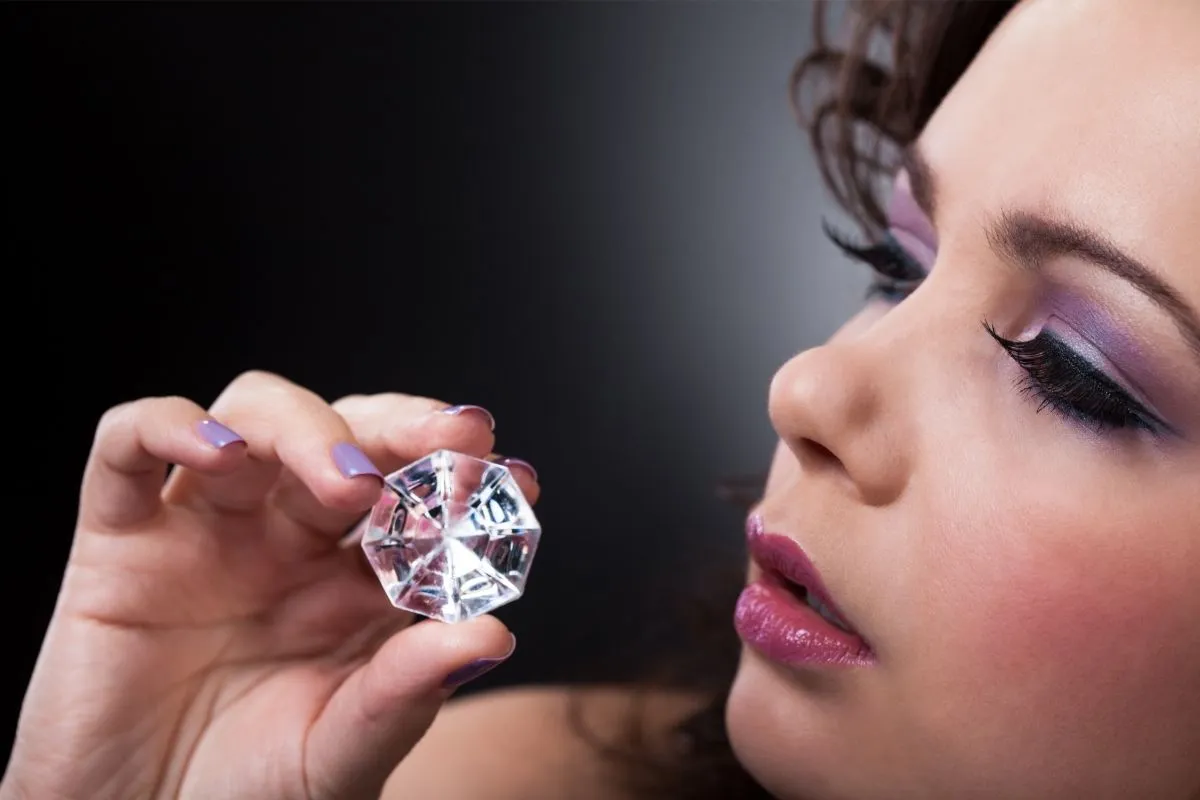Do diamonds have serial numbers? Diamonds, pure and quality, are quite expensive and can be considered a lucrative investment opportunity which is why it is important that you as a consumer get your money’s worth.
In order for this to happen, serial numbers have been created for diamonds to confirm their authenticity in relation to the GIA (Gemological Institute of American) scale which grades diamonds based on their cut, clarity, color, and carat.
Do All Diamonds Have Serial Numbers?

Although not all diamonds have serial numbers, the ones graded by the GIA have serial numbers that correspond with the number on the certificate during the certification process to prove their authenticity through the matching numbers.
Some of the cases in which a diamond might not be certified despite being purchased legally are if a jeweler works independently and doesn’t have enough funds to have the diamonds registered with the GIA or if the diamonds were procured illegally or unethically.
While diamonds brought into the country illegally or unethically might be decreased in rate, there’s a possibility you won’t get a certificate upon purchase, and even if you do. It could be self-awarded or awarded by a third-party institution that isn’t recognized by the GIA.
However, purchasing a diamond without a serial number won’t get you into trouble as you are not legally responsible for the jeweler’s actions in as much as you aren’t involved or aware of any foul play.
The serial numbers of diamonds provided by the GIA can’t be seen with the naked eye as it is tiny and laser inscribed on the girdle of the diamond. Which is the small rim around the perimeter of a diamond, so that the diamond’s light performance or sparkle is not affected in any way and its value isn’t lessened by the engraving.
Special equipment will be needed to see the serial number engraved on the diamond you wish to purchase. This should be done with the help of a professional so you don’t accidentally damage your diamond.
The only way to ascertain if your diamond has a serial number is by having its certificate. This is why you should also be sure to ask for the certificate alongside the diamond you intend to purchase if the serial number is important to you as well.
When Did They Start Putting Serial Numbers on Diamonds?

Diamonds have existed and been created by nature for a long time and scientists have put in work to debate ways. In which they can track these diamonds from the mines they’re extracted from onto the fingers that possess them.
The laser engraving system was patented in the 1970s when it was discovered that laser beams could burn out imperfections and improve otherwise unwanted diamonds.
In 1998, a world leading diamond producer also came up with another way of branding diamonds three-dimensionally known as “Marque” by making use of what Global Witness describes as “electron beam lithography”, an expensive and time-consuming method.
This same result can also be achieved by another faster and more precise means known as a focused ion beam. Although quite expensive, beams of ions can spray a collection of letters the width of a human hair across a diamond and several companies prefer this method for inscribing logos and serial numbers on diamonds.
The reasons behind the engraving of serial numbers on diamonds which are beneficial to consumers include:
- Quality: To avoid fraudulent claims, serial numbers are there for the confirmation of a diamond’s quality and worth. A jeweler might be dishonest about the four factors that determine a diamond’s grade but the serial number and corresponding certificate number are sure to reveal its true quality.
- Proof of Ownership: During the certification process, the serial number with the certificate of your diamond if engraved will be registered or listed alongside your name. This is in case you experience the loss of your diamond, you can always prove your ownership if it is ever recovered or found.
- Value: The presence of a serial number on your diamond is a huge relief if you ever plan on selling it as it will assure your potential buyer of its value and legitimacy. The same way it did for you at the time of your purchase.
Do Diamond Rings Have Serial Numbers?
Not all diamond rings have serial numbers depending on where you make your purchase, and the presence of a serial number on your diamond ring can be beneficial to you in the future. It is important that you ask your jeweler for this information before making the purchase.
The code or serial number on your diamond ring will reduce the risk of it being stolen as it can be easily tracked or traced should an unfortunate event occur.
Does Lab Grown Diamonds Have Serial Numbers?

Lab grown diamonds are synthetically/man-made produced diamonds in the safe and structured location of a laboratory by simulating the same events that naturally created diamonds undergo for a short period of time.
Most lab grown diamonds, although not as expensive and valuable as their natural counterparts, also have serial numbers engraved on them that can be seen with the help of a microscope. They can also have the grades or initials of the lab/agency that certified the stone engraved on them.
Do Tiffany Diamonds Have Serial Numbers?
Apart from the GIA, there are other institutions that grade diamonds with serial numbers and one of them is Tiffany & Co; apart from the registration with GIA.each diamond is provided with a unique SKU number that will enter into the company’s own database.
With the use of high-tech laser technology, the luxury jewelers Tiffany & Co mark their precious stones including diamonds with T&C serial numbers. Each one is individually registered and ensures that customers will be able to find out the specific region or country the stone was mined from.
Not only that but with serial numbers inscribed on Tiffany diamonds and the one certificate per jewelry piece given. Customers can also learn where a diamond was cut, polished, and set and they can trace the stone to find out if it was ethically procured and conflict-free.
It has been made easy to spot fake Tiffany jewelry. For example, all Tiffany engagement rings have two serial numbers on them, and instead of on the girdle, these numbers can be found on the star facet of the diamond, with the exception of the older Lucida cuts.
How Can You Tell If a Diamond is Lab Grown?

Lab grown diamonds, also known as lab made, lab created, synthetic, cultured or created, have similar properties as their natural counterparts and as such can be easily mistaken for them which is why it is important to be able to identify them appropriately.
Some of the ways to tell if a diamond is lab grown are as follows:
1. Ask a certified gemologist jeweler or one who is affiliated with a professional association like the Gemological Institute of America if a diamond was grown in the lab. They should be able to provide you with a grading report proving whether or not it lab grown and the type of diamond you’re getting based on its cut, clarity, color, and carat.
If they refuse, that just means you should find another jeweler.
2. Make use of a magnifying glass to find the laser inscription of the initials of the lab/agency and the serial number on the diamond’s girdle rather than trying to tell with your eyes since mine and Lab grown diamonds have the same properties.
3. Placing the diamond under a UV screener to look for fluorescence. A mined diamond will be blue under a UV screener and a lab grown diamond will look red.
This is quite an effective way to tell a lab grown diamond apart but this screener is costly and the average jeweler might not possess it.
4. Lastly, you can send your diamond to a gemologist who will help you scan it with an infrared spectrometer in order to know if it is a type IIa like the majority of the lab grown diamonds are.
Do Wedding Rings Have Serial Numbers?

A wedding ring will have a serial number as long as the gemstone on it has been properly graded, certified, and to find the inscription. Which is always etched with a laser on the girdle to avoid disrupting the gem’s beauty.
A microscope can be used because the number isn’t visible to the naked eye.
In order to avoid accidentally damaging the ring or gemstone on it, it is advisable to get the help of a professional to find the serial number on most wedding rings.
Having a serial number on the gemstone of your wedding ring is very beneficial as it automatically provides you with information about whether or not it was entered into the country legally and has been processed by reputable authorities. It also grants you proof of ownership in the event that your ring goes missing and is recovered.
Conclusion
Not all diamonds have serial numbers on them but the presence of one can be beneficial to its owner in the future. This is why it is important to make inquiries from the jeweler if you intend to purchase a diamond.
In order to ascertain that you are getting the worth of your money or the exact value of the diamond you are about to purchase is said to have, make adequate inquiries about the four C’s (cut, clarity, color, and carat of the stone). Which are the assessments on which a diamond’s value is based.


